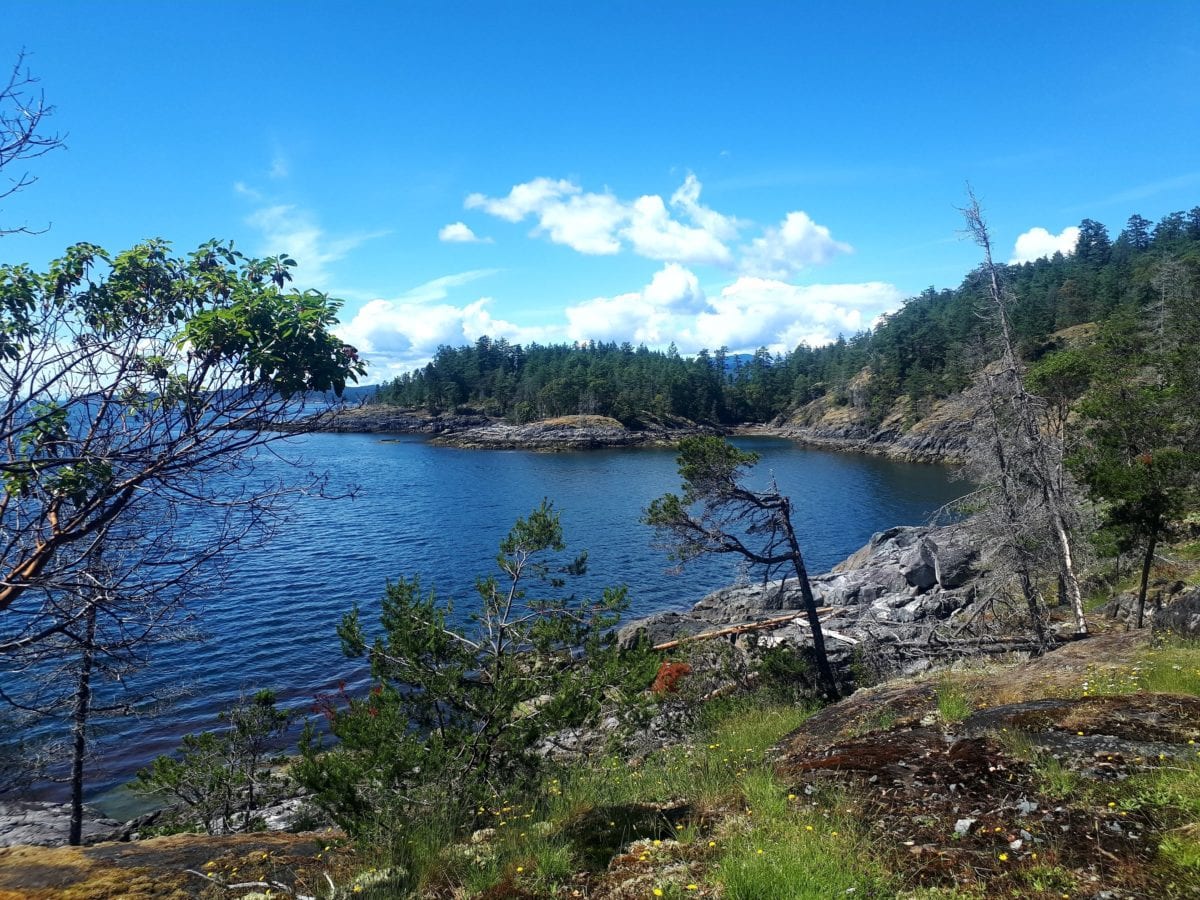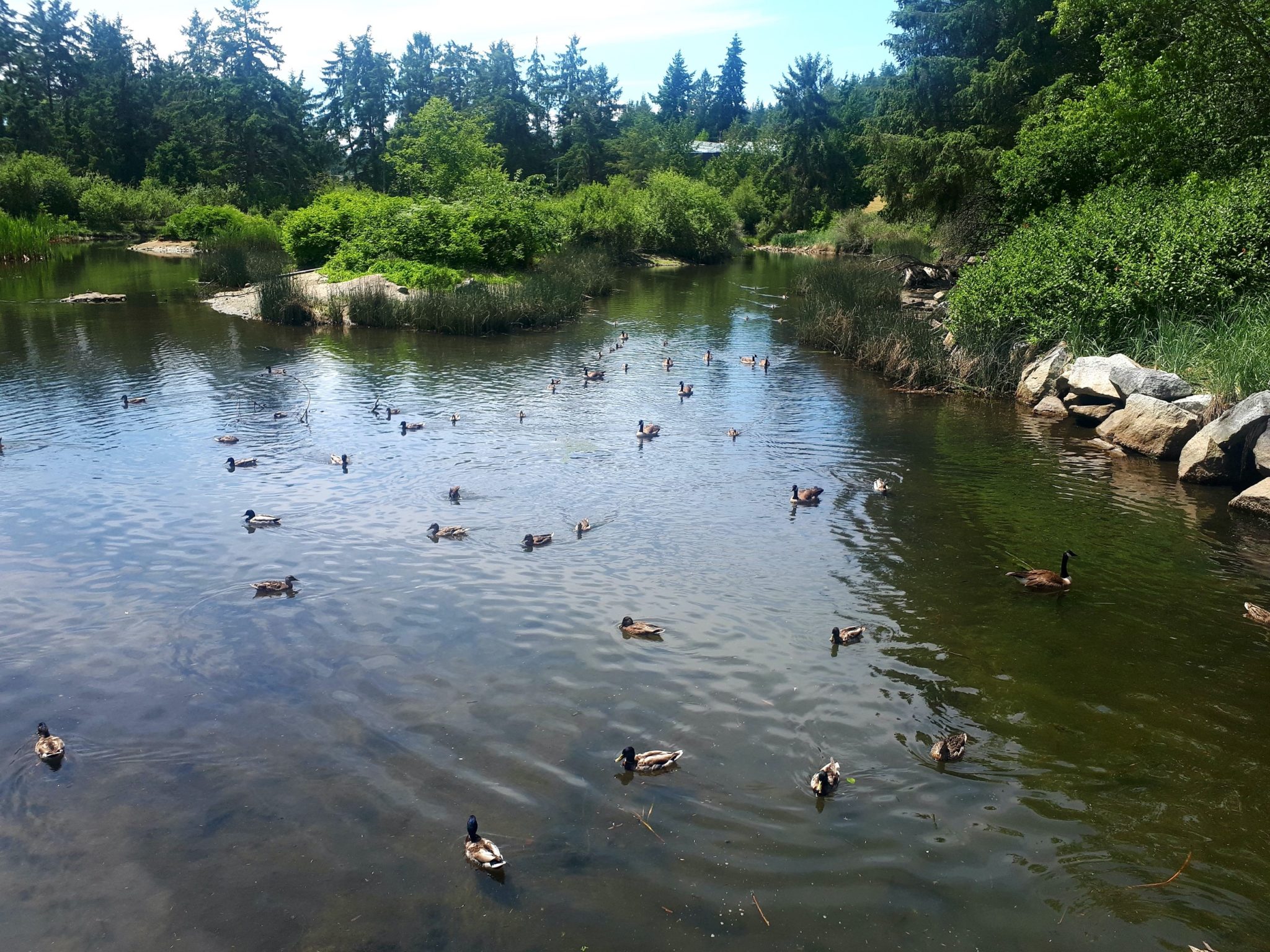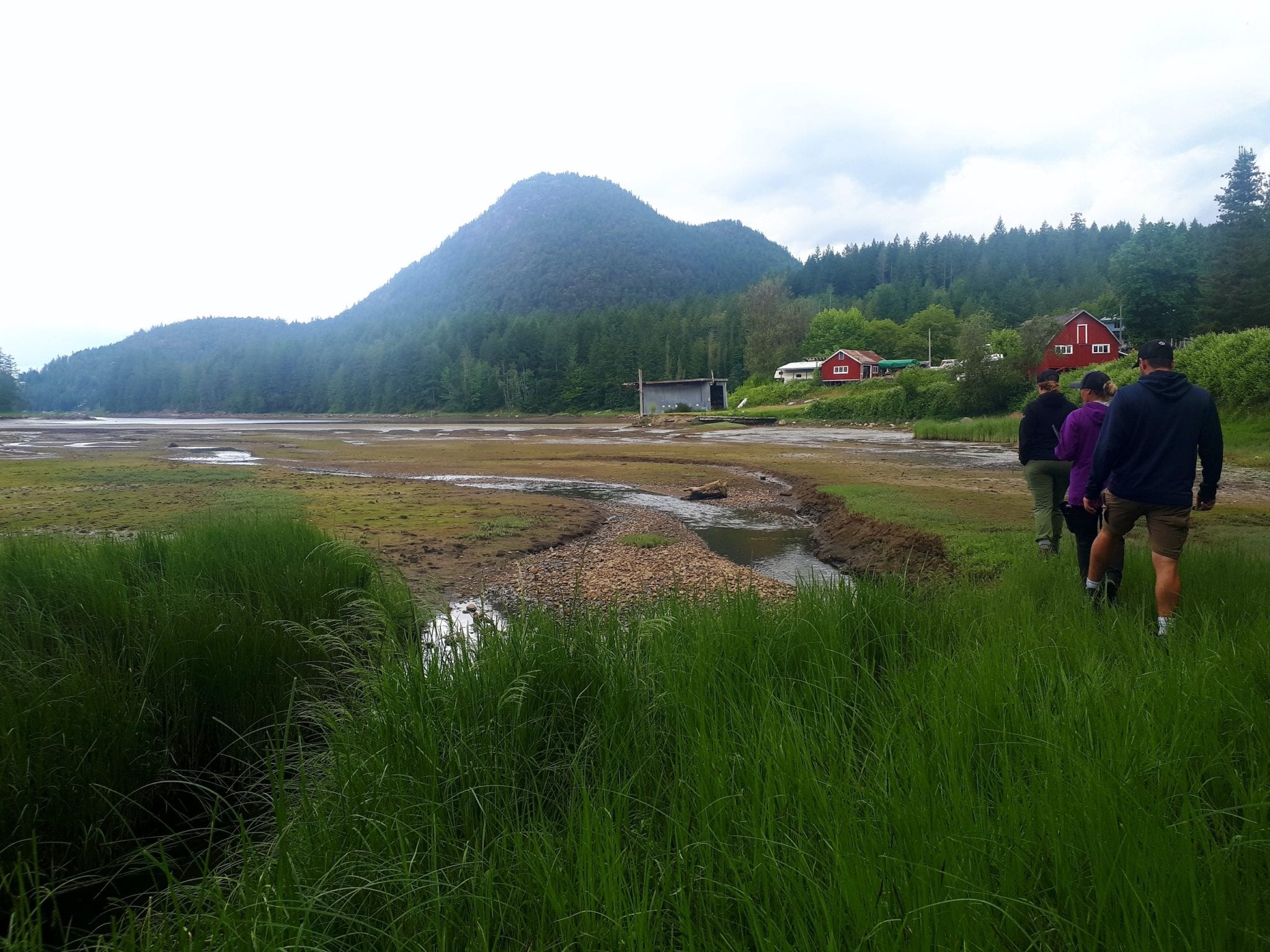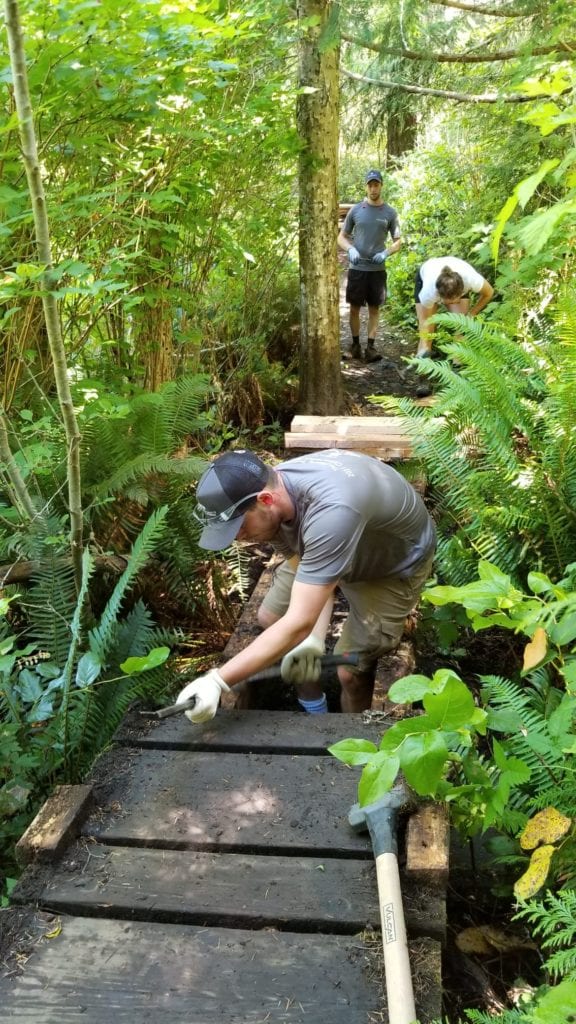
By: Jack Scher, Lower Mainland Conservation Field Crew member
Earlier this month our Lower Mainland Conservation Field Crew had the opportunity to head over to the Sunshine Coast for a four-day work trip. This gave them the opportunity to assess three of our properties and spend some quality time in the outdoors together!
 On Monday June 14th, the crew took an early ferry to Langdale and headed straight to Porpoise Bay Provincial Park where they would camp for the next three nights. After a quick stop to drop off their camping gear, they went to visit Sechelt Marsh, just a short 10-minute drive from the campground. As the crew only visits this site once a year, it was important for them to conduct a thorough assessment. First, they assess the boundary of the property and make sure there are no issues and then they record what species they find. This is called collecting the “bio-inventory” of the property, which will eventually be included in the crew’s season report and will be passed along to next summer’s crew members. Next, they worked on the public trail, picked up some garbage, removed invasive species, and made sure to say a quick hello to the waterfowl that call this marsh their home!
On Monday June 14th, the crew took an early ferry to Langdale and headed straight to Porpoise Bay Provincial Park where they would camp for the next three nights. After a quick stop to drop off their camping gear, they went to visit Sechelt Marsh, just a short 10-minute drive from the campground. As the crew only visits this site once a year, it was important for them to conduct a thorough assessment. First, they assess the boundary of the property and make sure there are no issues and then they record what species they find. This is called collecting the “bio-inventory” of the property, which will eventually be included in the crew’s season report and will be passed along to next summer’s crew members. Next, they worked on the public trail, picked up some garbage, removed invasive species, and made sure to say a quick hello to the waterfowl that call this marsh their home!
 The next morning the crew drove 30 minutes north of Porpoise Bay to Gun Boat Bay for their next day of work. In previous years, Field Crews found squatter camps on the property, so they spent most of their time walking through the forest and along the beach making sure animals were left to their own devices with no humans causing them any trouble. Along the way, they found different types of animal droppings like Black Bear and Elk among others which was very exciting to see! When many different animals are present in an ecosystem, it indicates a sustainable balance of carnivores, herbivores, and plants.
The next morning the crew drove 30 minutes north of Porpoise Bay to Gun Boat Bay for their next day of work. In previous years, Field Crews found squatter camps on the property, so they spent most of their time walking through the forest and along the beach making sure animals were left to their own devices with no humans causing them any trouble. Along the way, they found different types of animal droppings like Black Bear and Elk among others which was very exciting to see! When many different animals are present in an ecosystem, it indicates a sustainable balance of carnivores, herbivores, and plants.

On Wednesday, June 16th, the crew met with BC Parks ranger Jordan Dooley, who works out of Porpoise Bay Campground and manages roughly 15 parks on the Sunshine Coast. The crew drove 45 minutes north to Francis Point Provincial Park where they dismantled an old walking bridge that crossed a stream and worked all day to build a new one.
With help from Ranger Jordan, the crew installed two 20-foot pieces of wood for the base of their bridge and then installed smaller perpendicular planks to create the walkway. After some heavy lifting, and hammering the crew was proud of the new and improved bridge! They finished the day by taking pictures for their “photo monitoring” project which allowed them to update their photo dataset. By taking photos in the same location every year, they are able to identify the ways in which the ecosystem changes over time. Identifying these changes helps the crew with their land conservation strategies and helps them maintain healthy habitats for wildlife!
